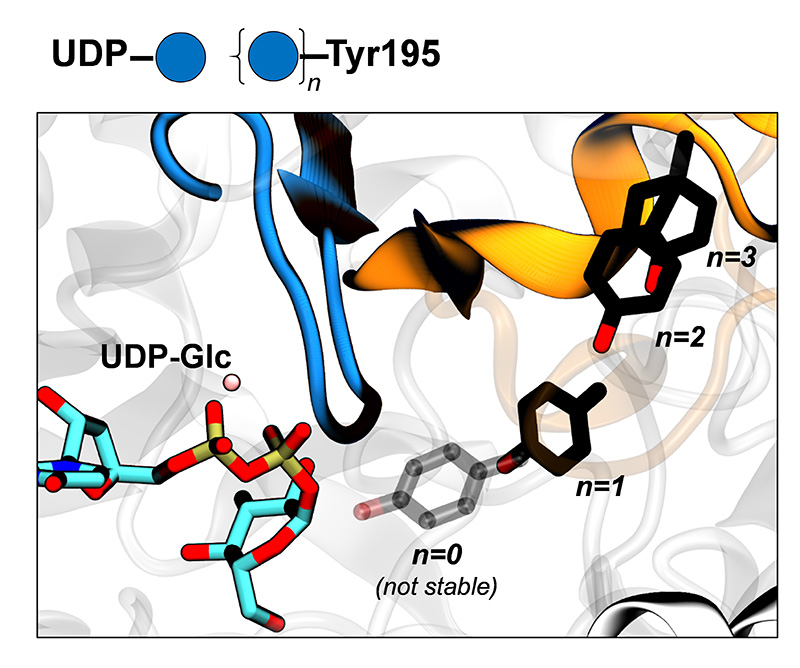Glycogen is the key energy storage molecule in humans, animals and fungi. It’s where the glucose that fuels us is stored and release from. However, the precise mechanisms by which glycogen is formed at its very start have remained unclear until now. A recent study published in Nature uncovers how the enzyme that initiates glyconeogenesis works at a molecular level. The research was carried out by a team of computational biology from the University of Barcelona (UB), together with research groups of Chemical and Structural Biology of the University of Oxford.
At the heart of the glycogen particle there is a protein that starts the glycogen formation catalysing its own autoglucosylation, that is, decorating itself with glucose molecules. This ‘self-sweetening’ protein – glycogenin – has been hard to understand since, by definition, as it is decorating itself it is also changing (and so its mechanism is ever-changing too). This seeming conundrum in basic human Biology and health has now been solved by using Chemistry – mediated by the unnatural metal palladium – to ‘jump start’ or ‘shunt’ into these different decorated forms directly.
The researchers at the University of Oxford could access different states of glycosylation of the glycogenin enzyme through a palladium-mediated enzyme activation ‘shunt’ process using on-protein C–C bond formation. The UB team, using computational techniques, has modelled these states and has deciphered the mechanism of glycosylation (synthesis of glucose-glucose bonds) through methods of quantum mechanics and molecular dynamics.
Both experiments and calculations reveal a surprisingly tolerant process to glycogen’s creation and growth, which then become very precise as it goes on. This new of way of ‘jumping’ into different states of Biology using Chemistry suggests a new way of understanding and even programming Biology directly.
Reference
